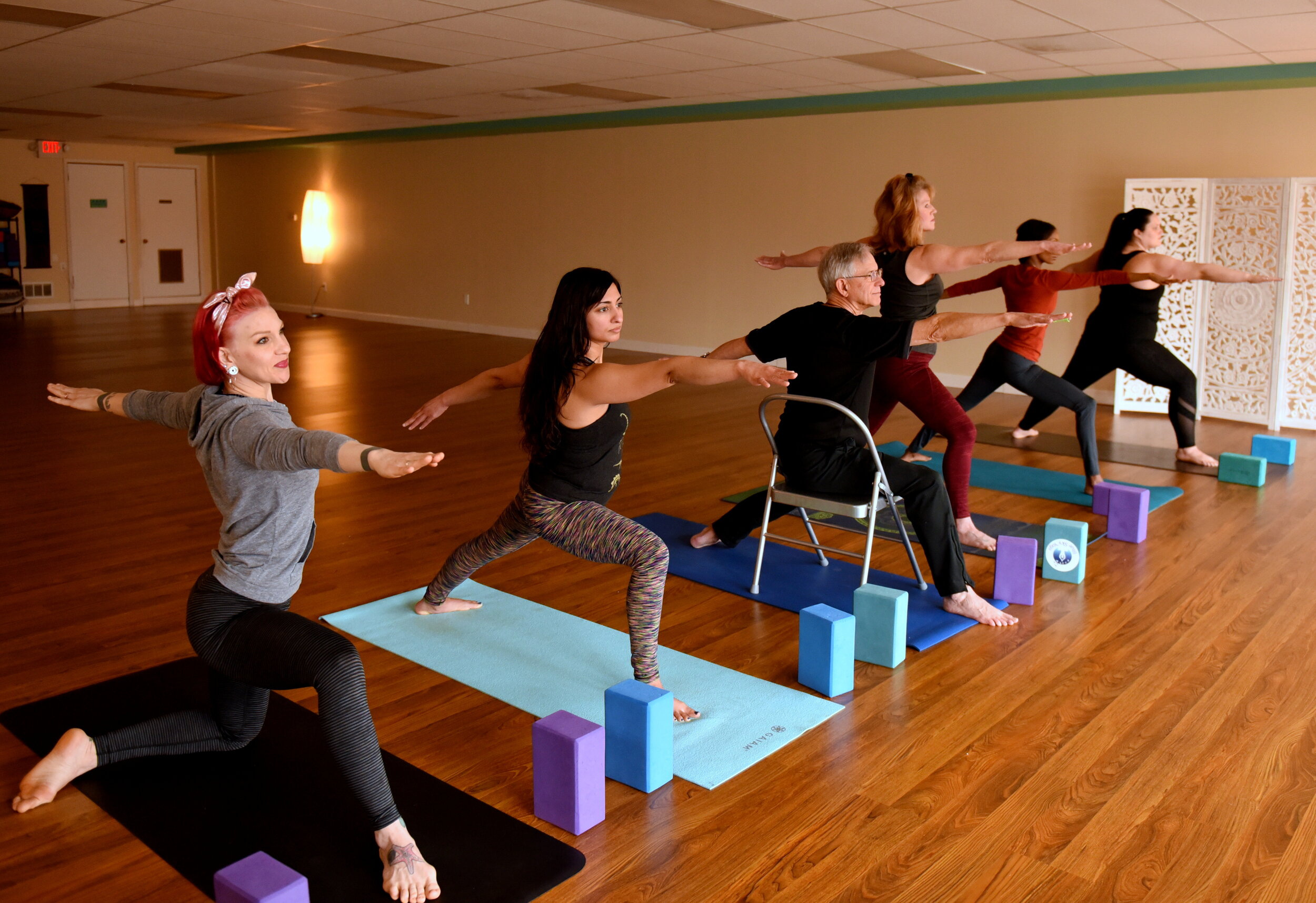Vriksasana (Vriksa = tree; asana = pose) or Tree Pose
Because of the craziness of trying to navigate “stay-at-home” and businesses closing, we missed our April Pose of the Month which would have likely been Tree Pose to celebrate both Earth Day and Arbor Day; however, we couldn’t let it be passed up, and feel how appropriate it still is here in June.
As you get outside, you will likely see so many of our beautiful trees and flowers in full bloom. And just like the trees that stand tall, rooted, and grounded through chaos and stormy weather, we too have been asked to stay strong and focused through our own chaos, turmoil, stresses and to weather our own storms–real and perceived.
Tree pose also asks us to explore the physical act of balancing by focusing on one thing in the moment. We can take this lesson off the mat by discussing the need to have a work/life balance to maintain our physical, mental and emotional health. It can be very difficult to find balance among our work, family, rest, play and service to others. How often are you trying to do too much at once and then nothing really gets done well? How often do you find yourself on your phone while you are at a gathering with friends and family. Tree pose reminds us that when we are able to bring ourselves fully present in the moment on the ONE THING that is right in front of us and do it or be there completely and fully, we not only show up for ourselves, but for others in the best way possible. And lastly, when balance doesn’t seem possible, we can always reach out for support (a wall, a chair, a friend).
As we move into June, the month of light, towards the Summer Solstice — the longest day of the year — let’s find balance in all the uncertainty, stand strong through all the changes, shine our light to not only help support ourselves but also to shine the way for others, and when we see our friends struggle, let’s reach out a helping hand.
How To
Start in Tadasana/Mountain Pose
Find a drishti or focused gaze in front of your body for a focal point
Shift your weight into your left foot, and lift your right heel off the mat
Start to feel the shift in balance there, engaging your core
Then turn your right knee out to the right
Staying there with your toes supporting you and heel on the ankle is a fine place to be
If you feel steady and at ease there, you can try bringing the sole of your right foot up to the side of your shin/calf
Continue to engage the low belly
You can stay there, or bring your foot to the top of your inner left thigh
Go slowly and only bring the foot up as high up as you can maintain your balance
Once in place, bring your hands together in anjali mudra or namaste or prayer mudra
Keep your vision on the one point and engage the core
Feel free to stay there or explore other arm variations
Stay for several breaths
To come out, lower the right leg and resume Mountain Pose.
Repeat on the second side.
Variations
Foot placement can stay on mat, shin or on upper thigh
Several different arm variations
Back to the wall
Hand on a wall
Supported by hands on a chair
Seated in chair with bent knee foot to ankle
Seated tree or Janusirsasana
Eyes closed to challenge balance
Tree plank & side plank
Benefits
Increases balance
Improves focus & concentration
Improves memory
Increases confidence
Strengthens ankle and foot of the standing leg
It’s just plain fun!
Prep Poses:
Adho Mukha Svanasana/Downward Facing Dog Pose
Anjaneyasana/Low Lunge Pose
Ardha Uttanasana/Half Forward Fold
Ashta Chandrasana/High Lunge Pose
Baddha Konasana/Bound Angle
Bidalasana/Cat Pose
Malasana/Squat Pose
Prasarita Padottanasana B & D/ Wide Legged Forward Fold w/hands on hips & grabbing big toes w/peace fingers
Supta Padangusthasana/Reclined Big Toe Pose
Tadasana/Mountain
Utthita Trikonasana/Extended Triangle
What this Pose Preps You for:
More balancing poses
Utthita Hasta Padangusthasana/Standing Hand-to-Big-Toe Pose
Vasisthasana w/top leg in Vrksasana position/ Side Plank w/leg in Tree pose
Counter Poses:
Tadasana/Mountain
Ardha Uttanasana/Half Forward Fold
Uttanasana/Forward Fold
Garudasana/Eagle Pose
Balasana/Child’s Pose
Contraindications & Cautions
Practice on a firm, level, and non-skid surface
Dizziness
Knee injury
Works consulted: 30 Essential Yoga Poses by Judith Lasater, Yoga Sequencing by Mark Stephens, and YogaBasics.com






